#French automotive design
Text

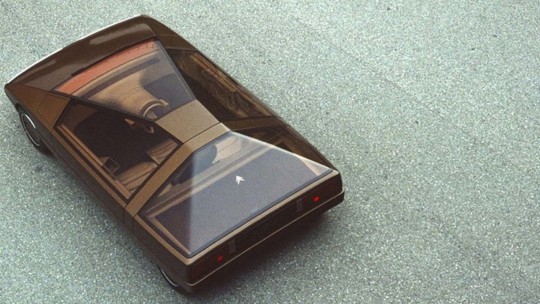

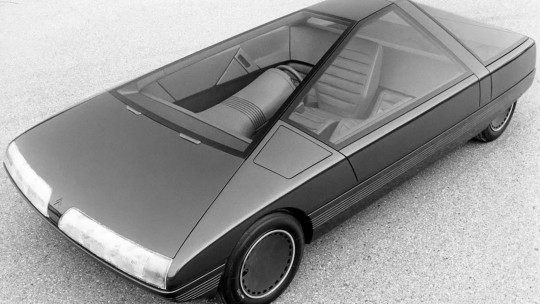

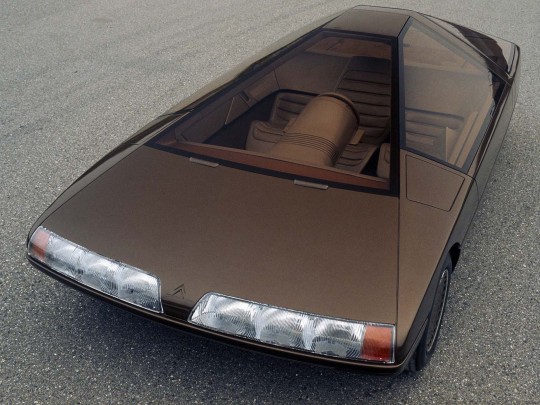
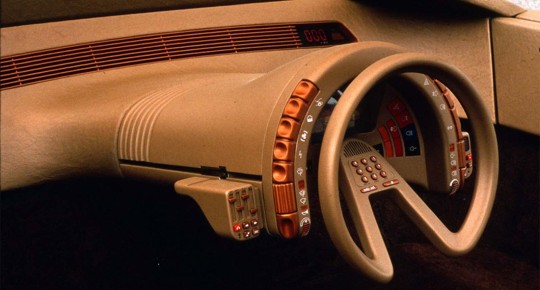

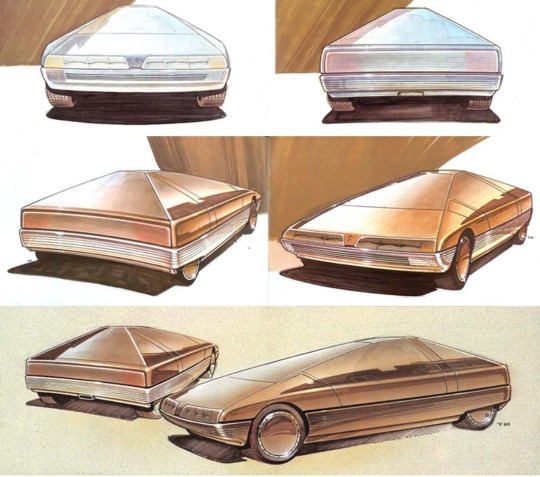
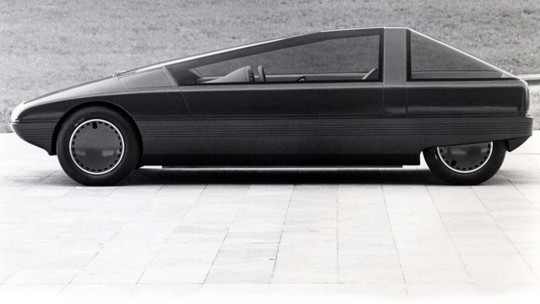


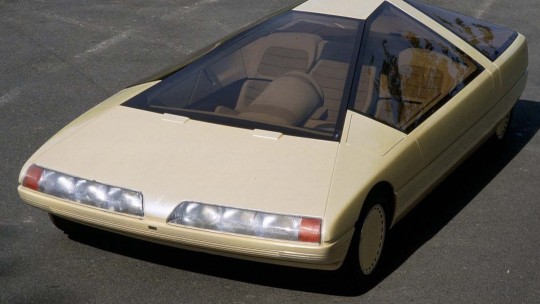
Citroën Karin: A bizarre French concept car that looked like a pyramid spaceship on wheels, 1980
#design#automotive#automotive design#Citroën#concept car#Citroen#French automotive design#France#cars#car#product design#car design#concept car design
566 notes
·
View notes
Photo
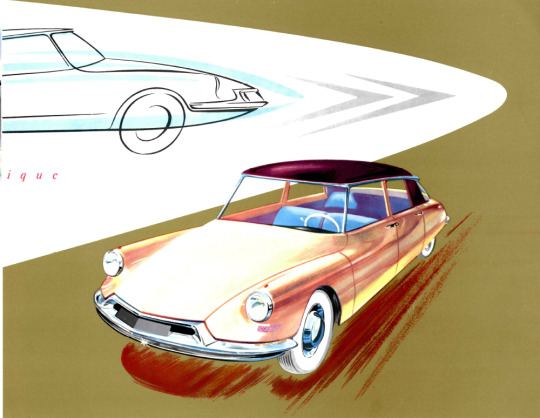
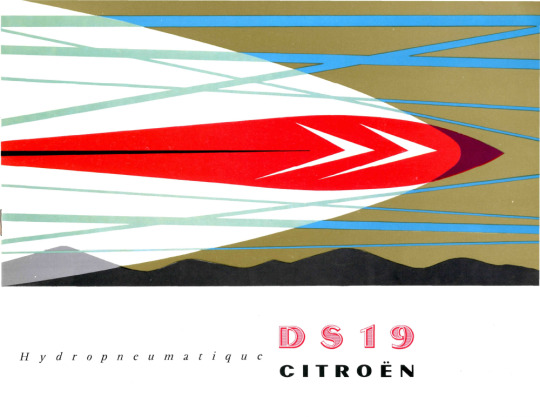
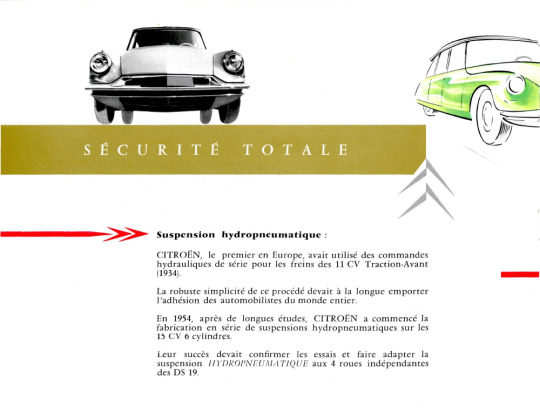

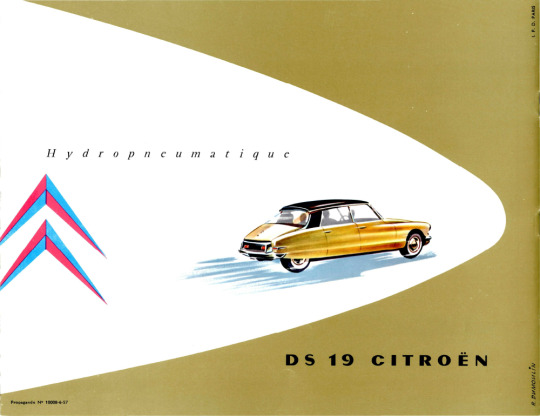
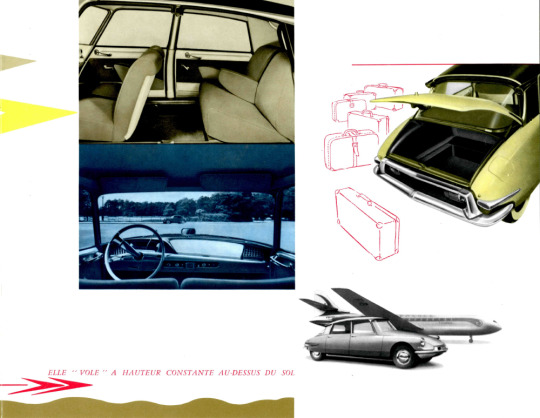
Advertising brochure for the design classic Citroen DS 19, 1957.
453 notes
·
View notes
Text

1946 - Wimille 01
Jean-Pierre Wimille built several prototypes after World War 2.
He managed to introduce a new concept.
The driver is the center of the car, while two passengers take place on both side, slightly behind him.
The CITROËN 11HP 4 - cylinder engine is placed in the rear. It gives 56 PS and is linked to a COTAL electromagnetic four speed gearbox.
Prototype 01 was built by CHAPRON.
#Wimille#quirky cars#Jean - Pierre Wimille#concept cars#French cars#40s cars#three - seater cars#automotive design
5 notes
·
View notes
Text
#Alpine#A4810#automotive design#supercars#car design#IED#Institute of European Design#Renault#French cars
0 notes
Photo
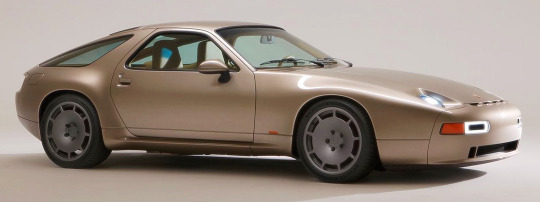

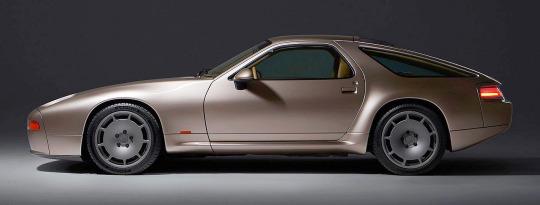



Nardonne Automotive 928, 2024. A French start-up has revealed a restomod Porsche 928 at Milan Design Week. The car combines 1990s 928 styling with contemporary Porsche design and technology. The original V8 has also been upgraded to 400hp and the transaxle gearbox has been given an additional ratio to make it a 6-speed manual. No prices have been given but Nardonne Automotive say their 928 restomod with be available from 2024
#Nardonne#Nardonne Automotive 928#Nardonne Automotive#restomod#Porsche 928#prototype#design study#Milan Design Week#1990s#2014#modified car#custom car#transaxle#V8
719 notes
·
View notes
Photo






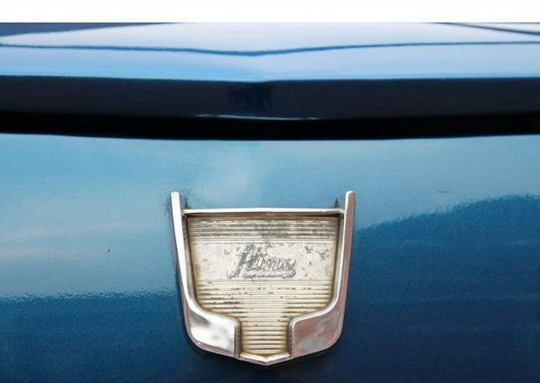



Hino Contessa 1300 Coupé
The name Hino was taken from the homonymous town in the Tokyo prefecture where the company's headquarters were (and still are). His first steps were to create powerful military vehicles for the Imperial Japanese Army during World War II. Once the greatest war of all time was over, it dedicated itself to the manufacture of diesel engines, trucks and buses. The post-war Japanese automobile industry underwent a major transformation thanks to the numerous agreements that many manufacturers made with car brands in Europe and the United States. Hino was no different. The operations were going from strength to strength, they had already earned an important place in the industry and even theirs was the first trolleybus in the history of Japan. The brand wanted to expand its business by launching into the world of passenger cars. Already under the name of Hino Motors, it signed a collaboration agreement with Renault in February 1953 and two months later they began to manufacture the Renault 4CV (also called Renault 4/4) under license. In Japan it was marketed as the Hino PA and some 35,000 units were sold in the 10 years it was in production. The French brand ceased production of the Renault 4CV in 1961, so Hino set out to take another step in the automotive world: manufacture its own car. They contacted the prolific Italian designer Giovanni Michelotti, who had worked with brands as relevant as Ferrari, Lancia, Maserati, Alpine or Triumph, to draw the silhouette of the new Japanese car.
The Hino Contessa 900 used the base of the Renault 4CV but at first glance no one could recognize that link due to the charming sedan body designed by the Turin designer. Renault's 35 hp 0.9-litre engine was positioned at the rear and was sufficient to animate the rear axle with the 750 kg that the car weighed. Shortly after, the Hino Contessa 900 Sprint was launched, a coupe version that reduced the weight by 100 kg and had an engine powered by Nardi up to 45 CV. With an attractive design, greater habitability -it offered space for five passengers, one seat more than the 4CV- and the proven reliability of its engine, it was not surprising that the Contessa achieved good sales results. 47,299 units were marketed between 1961 and 1964, a small part of them manufactured beyond the Japanese borders. The great reception in the market of its first car encouraged Hino to develop the second generation. Once again, Michelotti was in charge of its design, who had an overwhelming personality. The front with double optics and no grille was clearly reminiscent of the Chevrolet Corvair while the general lines were similar to other models designed by Michelotti such as the Triumph 2000. The Italian designer had been inspired by the English and American cars for this Japanese model with a French engine. Long live globalization! The Hino Contessa 1300 was bigger and heavier than its predecessor, but also more powerful by using a 1.3-liter 55 hp engine from the Renault 8. It began its commercial journey in 1964 and a few months later the sports version with bodywork arrived. two-door, the Contessa 1300 Coupé with 65 CV. The second generation of the Contessa was exported to several countries around the world, being manufactured in Japan, Israel and New Zealand.
80 notes
·
View notes
Photo

Wrenchie!
This were-French bulldog swings his stocky frame into combat with a cruel crowbar and designer jacket! Never seen without his custom tag and collar, Wrenchie uses his bachelor of science in automotive technology to dismantle his enemies efficiently!
130 notes
·
View notes
Text
French grey: 1950 Simca 8 Sport Coupé
The Simca 8 Sport Coupe’s design roots can be traced back to the illustrious Italian design house Pininfarina, marking a significant chapter in automotive history. This particular model mirrors the luxury and style seen in high-end sports cars of its time, reminiscent of contemporaries such as Cisitalia and Ferrari. Its production was a result of a collaboration led by Simca’s Henri-Théodore…

View On WordPress
4 notes
·
View notes
Photo

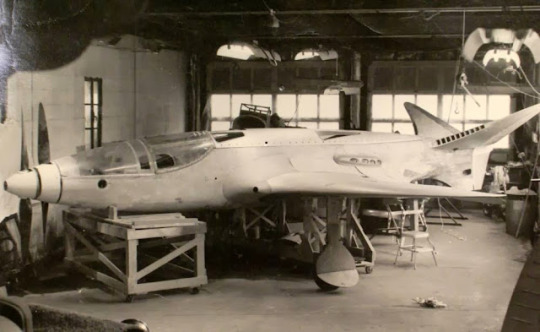


The Revolutionary 500 MPH Bugatti Plane That Almost Changed WW2
This is the Bugatti Model 100P: A 900 HP, 500 MPH, race plane imagined by none other than legendary automotive designer Ettore Bugatti, so technologically advanced that it could have single-handedly dominated the skies of WWII for Germany, had the Nazis ever gotten their hands on it. But after more than seven decades of obscurity in a French barn, the "Veyron of the Skies" is ready to finally take flight for the first time.
In 1938, Ettore Bugatti enlisted the help of his chief engineer, Louis de Monge, to do something the pair had never attempted before: build an airplane. And not just any airplane, a screamingly fast racer capable of beating his counterparts in Deutchland's most prestigious air race: the Coupe Deutsch. And they almost did too.
The Model 100P that Bugatti devised was the SR-71 of its day—an aircraft packed with technology ludicrously advanced beyond the existing state of the art. Measuring a stout 25 feet long with a 27-foot wingspan, the 100P Its fueselage and forward-swept wings were formed from multi-layer wood laminate—sandwiching balsa and hardwoods—a manufacturing technique still widely used today but practically unheard of in the 1940's.
The 100P was exceptionally streamlined thanks to its revolutionary inline engine design—wherein the 100P's pair of 4.9L, 450HP, 8-cylinder racecar engines were positioned behind the cockpit—that drove a pair of counter-rotating props. It also included a 102 degree V-tail, a zero-drag cooling system that ejected air from the trailing edges of the wings, and computer-directed flight controls that automatically changed the wing profile to produce extra lift or reduce drag and acting as an airbrake when pulling out of dives. Even the automatic landing gear took orders from the plane's computer system.
The airspeed record in 1939 stood at 469 mph, set by a German Messerschmitt. Had the 100P flown in 1940 at the Coupe Deutsch, the math suggests it would have topped 500 mph. However, the 100P never did fly in 1940, having just missed the entry deadline in September 1939 due to manufacturing delays.
While this was a disappointment to Bugatti, this delay may well have changed the outcome of World War II. During development, the French government learned of the project and approached Bugatti with an offer to use the technology for a new generation of highly-maneuverable, light-weight fighter planes. He turned them down but as the second World War broke out. When Germany invaded France in 1940, there became a very real chance that the Germans could learn of and seize the 100P, using the technology as their own war machine to decimate the Allied air fleet, Spitfires and all.
But Bugatti, who became a French citizen after WWI and who rarely hide his distaste for the Germans, wasn't having any of that mess. Rather than let the plane fall into Nazi hands, he decided to hide the nearly-completed aircraft in a barn somewhere in the French countryside. And that's where it stayed throughout the war.
After its rediscovery at the end of the War, the 100P was sold and auctioned numerous times before finally coming to rest in the EAA Airventure Museum, where it has been restored and is currently on display. However, this septuagenarian aircraft is far too old and delicate to fly anymore, which is why a dedicated team of classic plane enthusiasts have spent the better half of a decade building an exact, full-scale replica capable of flight.
"The vision, the courage, the entrepreneurial spirit, those things. That's where the focus is," Scotty Wilson, a former Air Force pilot and historical plane enthusiast from Tulsa, Oklahoma involved in the replica project, dubbed Le Reve Bleu, told KFOR. "It's an airplane at the end of the day. But it happens to be a very cool airplane with an interesting story."
"The Bugatti 100P was 85 percent complete when the Germans invaded," ex-RAF engineer John Lawson, who built the replica's gearbox, told Metro UK. "If it had flown in 1940 then it would have been a revolution. It was an incredible aeroplane and Louis de Monge, who worked on it with Ettore Bugatti, was a brilliant engineer."
"The plane was designed to fly very fast but the gearbox wouldn't have much longevity,"Lawson continued. "I reverse-engineered it from plans and pictures and designed one which runs perfectly." The Le Reve Bleu team hopes to have the replica finished by this fall and will be making appearances in the skies above the Farnborough Air Show and Goodwood Revival for years to come.
By Andrew Tarantola.
#The Revolutionary 500 MPH Bugatti Plane That Almost Changed WW2#Bugatti Model 100P#aircraft#plane#superplane#prototype#Ettore Bugatti#Veyron of the Skies#Germany#the Luftwaffe#ww2#long reads
70 notes
·
View notes
Text
Bugatti Type 51 Grand Prix Champion Gets a Parisian-tailored Winter Suit

The wonderful history of this charismatic car, Nethercutt’s 1931 Bugatti, is significant in both motorsport and automotive design worlds. Having won the Monaco Grand Prix for the Bugatti factory team in the race’s 3rd year of existence, driven to victory by none other than Louis Chiron, was just the opening act for this Type 51. Today, hypercar enthusiasts know the 2023 Bugatti Chiron as the multimillion dollar successor of the Veyron, named after the 1930s champion driver. After proving its agility on many tracks, Grands Prix and rallies, with such legendary drivers as Chiron and Rene Dreyfus piloting, sn (serial number) 51133 was eventually purchased for slightly less competitive use, along the ‘Allee des Acacias’/ in the Bois de Boulogne in Paris where young gentleman drivers showed off their latest sports cars. According to Pierre-Yves Laugier, Bugatti Owners Club???? Interestingly, the coupé creator’s family’s railway carriage factory location ultimately became the Citroën factories and competitive driver Bith benefited from his father’s role as head doctor for the Paris Police - something that may have been helpful on occasion. Bith enjoyed a close relationship with his family and explains he never once had an accident!
With a love for speed, driving precision and engineering, 26-year-old heir André Bith would’ve known the barely distinguishable visual differences between the Type 35B and its successor, the Type 51. The DOHC, inline 8-cylinder (hemispherical) supercharged 2.3 liter motor produced 180hp, reaching speeds of 140mph in race trim! It was among the most powerful and tough racing engines of the 1930s, often making up over 2/3s of the entries in 1930s Grands Prix. The engine bay showed off demascened, engine-turned finishes and right angles, appearing artistically inspired by the contemporary art movement of Cubism. However, historian Griff Borgeson explains that “the Boss” (as company founder Ettore Bugatti was known), ‘would have no waste of materials nor effort.’ Of the 40 Type 51 and 51A produced, only 23 are known today, the other 17 were perhaps destroyed in war - or absconded in such chaos.
Nethercutt’s sn 51133 survived both world wars and thanks to their thoughtful stewardship, was reunited not only with its Parisian tailored finery but also its doting owner who originally commissioned the alluring coupé ‘build’ back in 1937. At age 91, Bith fondly remembered driving the open, spartan 1931 racecar he purchased in 1935. Its pedigree already established having been driven to team victories and then owned by the dashing, scarf-wearing celebrity driver, Louis Chiron, who received the car as payment from ‘The Boss.’ The cold French winter of 1936 had Bith looking for a solution and he found inspiration in his pal Jean Bugatti’s Type 57SC Atlantic when they met for lunches. Notably there were just 4 Atlantics built on a wheelbase longer than the Type 51, between 1936 and 1938. The 2010 transaction for nearly $40million made it the most valuable car in the world - and one remains missing…
Bith began sketching with designer friend André Rolland. They found lightweight Duralumin was the latest and greatest material but at the time but few had worked with it. They were delighted to find an Italian craftsman at Dubos Carrosserie was eager and competent to work with new aluminum alloy’s lightweight, high mechanical resistance. Dubos agreed to do the project for just 20,000 FRF- IF Bith committed to putting the car in many concours and design/styling competitions. Bith explained to “Bugatti Magnum” Hugh Conway that he paid 18,000 FRF to Chiron in 1935 for the 1931 racecar. His mechanic Mr. Schaeffer spoke highly of the brothers Dubos, and did some modifications such as centering the gear lever on the box, fitting a Citroën TAV handbrake to the aluminum dashboard and adding a dynamo to charge the battery. Bith specified seats, not a bench, and no speedometer - the result was a far more uniquely tailored and useful car than a brand new Type 51 which would’ve cost 165,000 FRF then. One USD bought 22.24 French francs in April of 1937 equating to USD $7,419.- which is ironically about the same factor as the inflation rate change from then to now. $1 then purchases about as much as $21 today, making today’s prices 20.96 times higher. A new Type 51 today might be priced between $155,000 to $165,000 IF the car market remained the same, however, one new Bugatti Chiron model today is priced at USD $3.25million!
In April of 1937 Dubos began work on sn 51133 near The Boss’s preferred coach builder at Rue de Debaracdere, in Paris’ District XVII, on Rue de Sablonville - so they might’ve shared talent and materials. Dubos was respected for bodying Talbot Lago, Delahaye, Renault and Avions Voisin - such as what won Amelia this year. The Carrossier would have no issue expediting a 6-year-old racecar turned coupé - since the brand new Bugattis were bodied nearby. The Nethercutts wisely and fortunately were able to involve Bith in everything possible from historic documentation to even locating a steering wheel affectionately mounted on Bith’s wall. After owning a great many wonderful cars, Bith calls sn 51133 his Queen and came across an interesting discovery at the Bagatelle Concours of 1991. The same contest which his car won in 1937, shown by Miss France who wore a Drecolle dress the same violet blue as the car. A fellow who stood admiring one of the world’s 4 Bugatti Type 57SC Atlantic - the very car that inspired Bith originally - shared information about the disposition of his long lost Dubos coupé. It was now cherished by a fellow who enjoyed driving it in his Colorado Grand event, and once again, after being painted, black, white and black again, bore a similar violet-blue paint color as when Bith sold it.
The Type 51’s diminutive racing footprint needed an enclosure that wouldn’t slow it down much but would keep Bith and his ladyfriend warm as they sped up to 130mph outside Paris in the wintertime… Decades of using hammers and rollers enabled the Neuilly-sur-Seine facility to beautifully execute the hood and fenders in Duralumin, thanks to their Italian talent, and the body in lightweight steel. Bith was true to his word and entered the car not only in the Bagatelle but also Ponte d’Auteuil Concours d’Elegance and the Motor Exhibition of October 1937 at Earls Court, not to mention the Paris-Nice Rally et al. The Dubos coupé was featured in the October issue of “The Autocar” and the November issue “The Automobile Engineer” according to Pierre-Yves Laugier who explains it featured a Type 57 steering shell. Referring to it as the “Bugatti 57 Sport” he explains it was incorrectly attributed to Saoutchik in the magazine articles of 1937, no doubt of great consternation to Dubos. Bith was heartbroken when, in 1938 a gas attendant filled the tank with ordinary rather than super, and his attempt to remediate the mistake, seemed instead to ruin the engine. The car was sold and began to suffer.
The chassis retained value to various drivers and collectors while some appreciate the Dubos body which was separated from the car in the 50s and became a Pebble winner in its own right, with faithfully fabricated chassis and engine. Nethercutts were thrilled to relocate the body in 2000 at a Monterey auction and set about reuniting sn 51133 with its custom tailored, Atlantic-inspired, lightweight, tastefully finned Parisian suit. It is worth noting how Nethercutt’s curator Skip Marketti has dutifully communicated with the variety of owners, drivers and restorers relevant to this car - taking a thoughtfully objective, investigative approach to information gathering as restoration decisions were deliberated. What may seem overly tedious in some contexts is wise when the rarity, design excellence and accomplishments of a vehicle deserves a level of scrutiny that’s more museum-like or archival sciences while a more artistic, expressive approach may be appropriate in another project. In fact, the interests of a brand or cities’ industrial history can come into play when very rare, valuable works uniquely represent a nation’s contribution. Some collectors have even wondered whether a nation could invent reasons to require the repatriation of a particular collectible - all of which we mention simply to honor the stewardship and recognize the different sorts of context faced by restoration projects. Family honor can always play a role in such endeavors - inspiring great record-keeping, accuracy and quality at every step of the process.

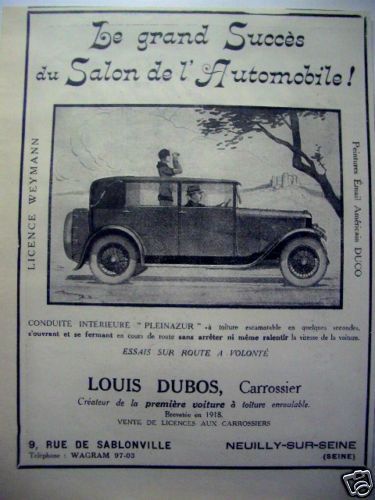
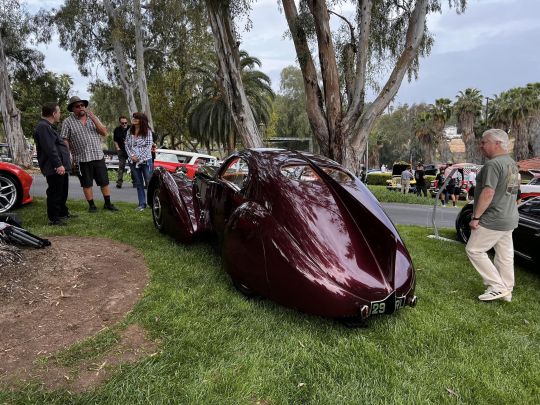
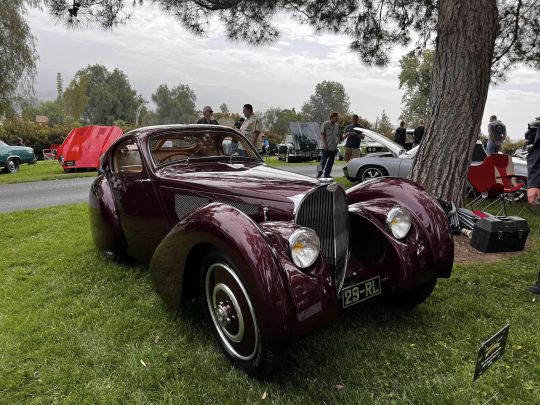
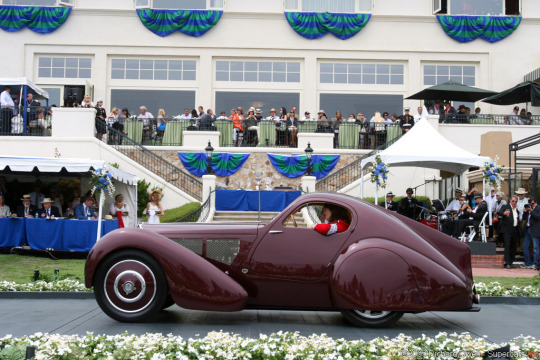


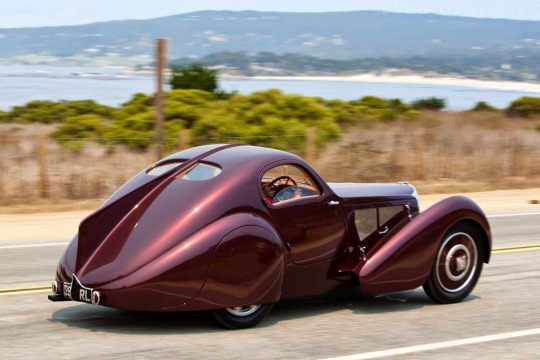
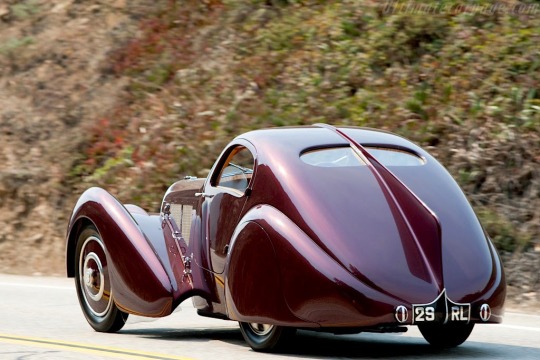
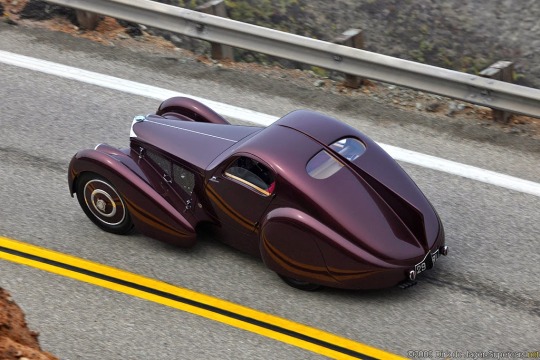
2 notes
·
View notes
Text
The 7 Greatest Free Sports Streaming Sites Of 2022
Another factor that SonyLIV has that other websites don’t is its premium design and clean interface, it goes completely with the site’s HD graphics. You can only access the location in India, Canada, and the United States, but with the use of a VPN server, you’re free to stream anyplace. Popular sports activities on the location are Baseball, Basketball, Football, Tennis, Hockey, Soccer, and Boxing. Jessica Kormos is a writer and editor with 15 years' experience writing articles, copy, and UX content for Tecca.com, Rosenfeld Media, and many others. Jeremy Laukkonen is automotive and tech writer for quite a few main trade publications.
Unfortunately, Stream2Watch is ridden with annoying advertisements that show up at every click on. I strongly suggest pairing the site with an efficient VPN when watching. The web site could be very straightforward; you just need to scroll down to verify in case your favourite match is listed – click and wait for the auto-play. I noticed cool features like a fans chat specific to each sports class and a light/ darkish mode icon.
Free MLB Streaming Sites
myfeed2all
feed2all
firstrow
firstrowsports
These streams are offered by Facebook users, so you might find low-quality and misleading streams. If you're in search of a particular recreation, search for a team name. MLB sometimes streams select video games through its MLB Facebook web page, so examine back frequently to see what's obtainable. You can also catch select MLB live streams by way of the MLB YouTube page. Bosscast is another web site that options reside sports streams from numerous sources.
On the left aspect of the homepage, you can try the player rankings, teams, coaches, AFL Ladder, AFL Injury listing, and tons of extra. TVCatchupshowcases essentially the most colorful emblem on the listing, permitting it to stand out essentially the most. It does meet expectations with its clear website design and an extensive record of obtainable channels. On the homepage, yow will discover a number of classes, these are soccer streams, NFL streams, NBA streams, NHL streams, MLB streams, and lots of more.
Many of the presents showing on this web site are from advertisers from which this website receives compensation for being listed right here. This compensation might impact how and where products seem on this site . These presents do not symbolize all available deposit, investment, mortgage or credit merchandise. Don't fear about compatibility, service is working with all browser - whether or not it be Edge, Google Chrome or Firefox! In addition we also advise that you block advertisements to guarantee that quicker speeds, which will make shopping much more gratifying too.. Live casts are available in numerous, selectable commentary languages for English, Spanish, Portuguese, French, German, Italian, Arabic, and Hebrew audio are every day up to date.
2 notes
·
View notes
Text
Let me use my pet peeve to absolve you of the anxiety and pedantry over using the "correct" terms for things.
Industry terms are not "correct".
They're not "correct" or "proper" or any other synonym that means they're right and anything else is wrong or ignorant or lesser.
Industry terms are exactly that. They're terms that have been standardized within a specific industry to make communication easier within members of that industry. Whether it's food, hospitality, machining, automotive, beauty, medicine, whatever.
If you don't work in that industry, and you're not talking to someone who works in that industry, you don't have to use those industry terms.
If you see someone post online about pubic shaving and they use the word "vagina"? You don't have to jump on them about using the "wrong" word. Is "vulva" more specific? Sure. But it's not the "correct" word, it is the medical industry term for that specific part of the body. So it would be helpful to use it when they're talking to their gynecologist. But the fact that you jumped in to correct them just proves that you understood what they were saying despite using the common language term.
Likewise, industries can disagree!
What the medical industry would call the "chest" or "sternum", the beauty industry would call the "decolletage", and the fashion industry would call the "chest" or "bust".
Why? Because the term were developed for different reasons! The medical industry has to get really granular and specific because there are so many parts of the human body and they can't try to fix your problem unless they know what specific part you're having an issue with. If I go into my doctor and tell them my stomach hurts, there's any number of things that the common term "stomach" generally refers to that could be the actual issue and they all point towards different possible issues, all with different treatments. I could be talking about the muscles around my stomach, or I could be talking about one of the half-dozen or so organs inside it.
The beauty industry doesn't need to be as specific. For the most part, cosmetologists (people who specialize in hair, skin, and/or nails) are working on areas. When someone goes to a waxing appointment, they're not telling the waxer, "I want you to wax my ankles, shins, calves, knees, and thighs", they're just telling them they want to get their legs waxed. Because that kind of specificity is unnecessary. The waxer might go on to clarify whether the person wants their whole leg done, or the client might specify certain areas that should be avoided, but "leg" is a term that everyone understands.
The fashion industry also, in general, doesn't need the same kind of specificity. While designers can get really granular in the measurements they're taking and how the garment fits in different areas, the industry as a whole realized that what they really needed were words for the parts of the body most likely to be the smallest and largest around, because those are the most important parts to fit.
And hey! You might even notice that these terms don't even have an origin language in common! Most medical industry terms are derived from Latin or Greek. A lot of beauty and fashion industry terms come from French. Why are Latin and Greek more "correct" than French?
Why are medical industry terms more "correct" than other industry terms? Is it just because it's a scientific field and therefore is considered a higher authority?
Why don't we see people talking about the dangers of listening to "fortissimo" music on their headphones? Or getting nachos with mornay sauce?
That would be silly, right? You don't need a fancy professional French chef term for cheese sauce. Or a sheet music annotation to refer to loud music. People know what you mean when you use those common, plain language terms. In fact they probably understand better than using those very specific industry terms, right?
So why do you feel compelled to use those other industry terms? What makes them "better" or "more correct" than the plain language terms that most people can understand easily?
The most important thing about what kind of language you use is that the people you're communicating directly with understand what you're saying. Period.
1 note
·
View note
Text
Australia $1.14 Billion LED Lighting Market Size, Opportunities And Key Segments
The Australia LED lighting market, valued at USD 1.14 billion in 2024, is a significant component of the global lighting industry. With a projected compound annual growth rate (CAGR) of 8.6% from 2024 to 2032, the sector is expected to reach USD 2.43 billion by the end of the forecast period(2024-2032).
Australia Lighting Market key players

Here are some of the key players in the Australia Led Lighting Market
Signify N.V. (Philips):A Dutch multinational known for its Philips brand of lighting products. They are a leader in general lighting, automotive lighting, and UV disinfection lighting.
Osram Pty Limited:A German multinational that designs and manufactures lighting products, including LED lamps, luminaires, and optoelectronic semiconductors.
Crompton Lighting:An Australia company that designs, manufactures, and distributes lighting solutions for residential, commercial, and industrial applications.
Sylvania Schreder:A French multinational company that specializes in outdoor lighting solutions, including streetlights, floodlights, and area lighting.
Thorn Lighting: An Australia manufacturer of commercial and industrial lighting solutions.
Havit Lighting: An Australia manufacturer of LED lighting solutions for commercial and industrial applications.
Mirabelle International: An Australia company that designs, manufactures, and distributes lighting solutions for a variety of applications, including commercial, residential, and industrial.
Aqualuma LED Lighting: An Australia company that specializes in LED lighting solutions for aquatic applications.
Haneco Lighting Australia Pty Ltd.: An Australia company that distributes lighting products from a variety of manufacturers.
BOSCO Lighting: A Chinese company that manufactures a wide range of lighting products, including LED lighting, solar lighting, and outdoor lighting market
Opportunities in Lighting market
LED Technology Adoption
Energy Efficiency: LED lights consume significantly less power compared to traditional lighting solutions, offering substantial energy savings.
Longevity: LEDs have a longer lifespan, reducing replacement frequency and maintenance costs.
Smart Lighting Systems
Automation and Control: Integration with home and building management systems allows for automated control, enhancing convenience and energy efficiency.
Customization: Smart lighting solutions enable users to adjust lighting based on time of day, presence, or activity, enhancing user experience and further saving energy.
Growth in Green Building Initiatives
Regulatory Support: Increased environmental regulations are pushing more buildings to adopt eco-friendly lighting solutions.
Certification Programs: Programs like LEED and BREEAM encourage the adoption of sustainable lighting technologies to gain points towards building certification.
Advancements in Lighting for Health and Wellbeing
Human-Centric Lighting: Developments in lighting that adjust to human circadian rhythms can enhance wellbeing, productivity, and health.
UV Disinfection: The COVID-19 pandemic has spurred interest in UV-C lighting solutions for disinfecting surfaces and air in public spaces, hospitals, and homes.
Expansion of Industrial and Commercial Applications
Industrial Spaces: High-bay LEDs for warehouses and manufacturing facilities can reduce costs and improve safety by providing better quality light.
Retail and Hospitality: Advanced lighting systems can enhance customer experiences and drive sales, with dynamic lighting that adapts to the time of day or the mood of an event.
You can also read about:- Australia LED Lighting Market Analysis And Segmentation, Industry Key Players
Key Segments In Australia LED Lighting Market

By Type of LEDs
Luminaires
Lamps
By Usage of LEDs
Indoor
Outdoor
Street Lighting
Building Exteriors/ Façade Lighting
Parking Lots and Garages
Others
By End User Sector
Commercial
Residential
Industrial
Healthcare
Hospitality
By Type of Sales
Project
Retail
Companies Covered
LEDEXPO Australia
Ledtec
MyEnergy Group
Dongguan City Tianhua Photoelectric Technology Co Ltd
Jiangsu ChuangXu Optoelectronics Technology Co., Ltd.
Shenzhen Guangshezhaoming Technology Co., Ltd
Ningbo ALVA Electric Appliance Co., Ltd.
Zhejiang Danse Electronic Technology Co., Ltd.
You can also read about:- Exploring India's Lighting Market Size, Trends and Future Outlook
Conclusion
The Australia LED lighting market is set for dynamic growth, driven by technological innovation, regulatory support, and increasing market demand across various sectors. As we move towards 2032, the industry looks to embrace more sustainable and efficient practices, heralding a bright future for LED lighting in Australia.
#Australia LED Lighting Market#Australia LED Lighting Sector#Australia LED Lighting Industry#Australia LED Lighting Market Size#Australia LED Lighting Trends#Australia LED Lighting Market Report#Lighting Market Analysis#Lighting Market Revenue#Lighting Market Growth Rate#Lighting Industry Competitors
1 note
·
View note
Text
More Than a Drive: Personalized Journeys Curated for Your Vintage Car Dreams

Ah, the allure of the vintage car. It’s not just a mode of transportation; it’s a time capsule, a rolling piece of history whispering tales of bygone eras. The rumble of the engine, the gleam of chrome, the elegant curves — they evoke a sense of adventure, freedom, and a simpler time. But for many classic car enthusiasts, ownership is just the beginning. The true magic lies in experiencing these beauties on the open road, retracing the steps of motoring legends and creating memories that purr.
This is where the concept of a curated vintage car journey takes centre stage. Forget the generic road trip apps and forget winging it. Imagine a meticulously planned adventure designed specifically for your dream car and your deepest automotive desires. A journey that goes beyond point A to point B, weaving a tapestry of history, scenic wonders, and behind-the-scenes access that would make Enzo Ferrari himself grin.
Fueling Your Nostalgia: Tailored Experiences for Every Vintage Vision
Let’s face it, not all classic car dreams are created equal. Maybe you’re a lifelong admirer of the sleek Jaguars that dominated Le Mans in the 50s. Or perhaps your heart skips a beat for the rugged charm of a vintage Land Rover, begging to conquer forgotten trails. A curated journey caters to these individual desires.
The Thrill Seeker’s Paradise: Picture yourself carving through the French countryside in your perfectly restored Alpine A110, retracing the iconic Tour de France Automobile route. Imagine the wind whipping through your hair as you tackle legendary climbs and scenic switchbacks, feeling the spirit of the rally come alive in your classic steed.
Glitz and Glamour on the Grand Tour: Maybe your dream is a more sophisticated affair. Imagine cruising the Italian Riviera in a pristine 1967 Alfa Romeo Spider, the Mediterranean breeze carrying the scent of history and luxury. Stops at iconic coastal towns, exclusive access to private collections, and VIP treatment at renowned events like the Mille Miglia could be part of your meticulously crafted itinerary.
Beyond the Map: Unveiling Hidden Gems and Exclusive Access
A curated journey isn’t just about the miles you cover; it’s about the experiences you collect. Imagine exclusive access to private collections housing automotive royalty, where you can get up close and personal with legendary machines. Perhaps a behind-the-scenes peek at a renowned restoration workshop, witnessing the meticulous craft that keeps these automotive time machines alive.
Imagine indulging in gourmet meals at charming, hidden-away restaurants frequented by motoring enthusiasts for generations. Picture yourself swapping stories with fellow vintage car aficionados at exclusive social events, forging connections and friendships that transcend borders.
A Community of Passion: Sharing the Road with Like-Minded Souls
Let’s be honest, the joy of classic cars is amplified by sharing the experience with others who understand the magic. A curated journey doesn’t just put you behind the wheel of your dream car; it connects you with a community that shares your passion. Imagine a group of fellow enthusiasts, each with their own unique classic car story, joining you on the adventure. Picture the camaraderie, the laughter, the shared experiences that create lasting bonds forged in the spirit of vintage motoring.
Turning Dreams into Reality: The Art of the Curated Journey
Creating a personalised, unforgettable journey for every vintage car enthusiast requires expertise, passion, and an intimate understanding of the classic car world. Companies specialising in curated journeys, like bespoke vintage car travel specialists, possess this unique blend of skills. They work closely with you, meticulously crafting an itinerary that reflects your specific car, your interests, and your dream experience.
The Road Less Travelled: A Legacy in Every Mile
Ultimately, a curated vintage car journey is about more than just ticking destinations off a map. It’s about creating a legacy, a story etched in the very fabric of your classic car. It’s about the wind in your hair, the sun on your face, and the purr of the engine becoming the soundtrack to cherished memories. It’s about experiencing the golden age of motoring firsthand, not just as a spectator, but as an active participant.
So, dust off your driving gloves, polish the chrome, and get ready to embark on an adventure that transcends the ordinary. Because with a curated vintage car journey, the road less travelled becomes the path to an unforgettable automotive odyssey.
0 notes
Text
Key Players in the Australian Defense Market: Defense Contractors, Suppliers, and Technology Providers
In the Australian defense market, there are several key players, including defense contractors, suppliers, and technology providers.

To gain more information about the Australia defense market forecast, download a free report sample
Here are some of the prominent companies operating in this sector:
1. Defense Contractors:
BAE Systems Australia: BAE Systems Australia is a subsidiary of the British multinational defense, security, and aerospace company BAE Systems plc. It is one of the largest defense contractors in Australia, providing a wide range of products and services including naval ships, submarines, armored vehicles, and defense electronics.
Thales Australia: Thales Australia is a subsidiary of the French multinational aerospace and defense company Thales Group. It is a leading provider of defense technology and solutions in Australia, specializing in areas such as communication systems, electronic warfare, cybersecurity, and naval systems.
Lockheed Martin Australia: Lockheed Martin Australia is a subsidiary of the American aerospace and defense company Lockheed Martin Corporation. It provides a diverse range of defense and aerospace products, including aircraft, missile systems, surveillance systems, and cybersecurity solutions.
Northrop Grumman Australia: Northrop Grumman Australia is a subsidiary of the American aerospace and defense company Northrop Grumman Corporation. It offers a wide range of defense and security solutions, including unmanned aircraft systems, electronic warfare systems, and cybersecurity services.
Rheinmetall Defence Australia: Rheinmetall Defence Australia is a subsidiary of the German multinational defense and automotive company Rheinmetall AG. It specializes in armored vehicles, weapon systems, ammunition, and military technology solutions.
2. Suppliers and Technology Providers:
ASC Pty Ltd: ASC Pty Ltd is Australia's largest defense shipbuilding company, specializing in the construction, maintenance, and sustainment of naval vessels including submarines and surface ships.
Electro Optic Systems (EOS): EOS is an Australian technology company that designs, manufactures, and supplies advanced electro-optic systems, including remotely operated weapon systems, laser systems, and surveillance sensors for defense and security applications.
Cubic Defence Australia: Cubic Defence Australia is a subsidiary of Cubic Corporation, a leading provider of defense training and simulation systems. It delivers training and simulation solutions for defense forces in Australia and around the world.
Cochlear Limited: Cochlear Limited is an Australian medical technology company that develops and manufactures cochlear implant systems for people with hearing loss. Its technology has applications in defense, particularly in communication and hearing protection for military personnel.
Saab Australia: Saab Australia is a subsidiary of the Swedish aerospace and defense company Saab AB. It provides a range of defense and security solutions, including surveillance systems, naval combat systems, and communication systems.
These are just a few examples of the key players in the Australian defense market. The sector also includes a diverse range of small and medium-sized enterprises (SMEs) specializing in niche areas such as aerospace, cybersecurity, and intelligence technology, which contribute to the overall defense industry ecosystem in Australia.
0 notes
Photo



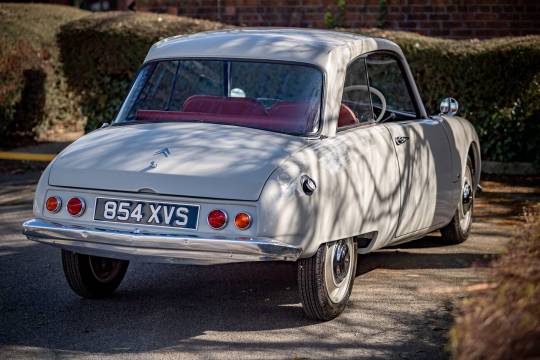





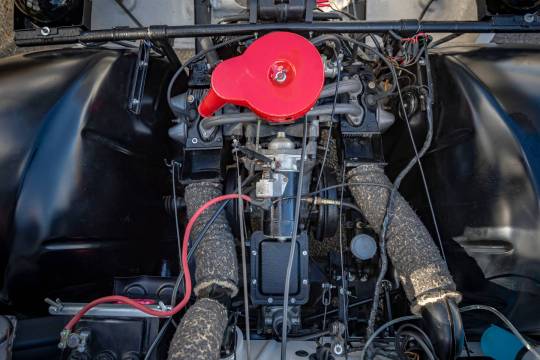
Citroën Bijou (1 of 211)
The Citroën Bijou was assembled from 1959 until 1964. A total of 211 cars were produced.It was built to appeal to a demographic which, it subsequently became obvious, didn’t really exist.Amazingly, there wasn’t much demand in the home counties for a slightly more refined, but even slower version of a French farmers’ car that was much more expensive than comparable offerings such as the Austin Mini.It incorporated some components from the 2CV, notably the two-cylinder 425 cc 12 bhp engine and its advanced, independent front-to-rear interconnected suspension. Other ideas, such as the futuristic single-spoke steering wheel, were borrowed from the DS.Was there any method in the madness? Well, yes, as a contemporary report in Automobile Engineer magazine attempted to explain: “Rather than compete with well-established, mass-produced family cars, it was decided to produce a vehicle to appeal to a narrower but more discriminating market. In particular, there was thought to be a market for a small, high-quality, long-lasting vehicle as a second car in families already owning a larger one. Used for shopping and local motoring, such a vehicle would not need full family accommodation or high power.It should require only a minimum of maintenance and attention and be capable of resisting deterioration without the protection of a second garage. In both these aspects, the air-cooled engine and simple chassis design are advantages. The problem of outdoor storage could be met by the use of a non-rusting, non-corrodible body.”
Despite (or possibly because of) its commercial failure at the time, the car soon acquired cult status among discerning afficionados of automotive esoterica and exotica.Not least because it is, undeniably, possessed of lavish amounts of quirkiness and charm.Today, they are as rare as teeth on a particularly endangered breed of hen.
29 notes
·
View notes